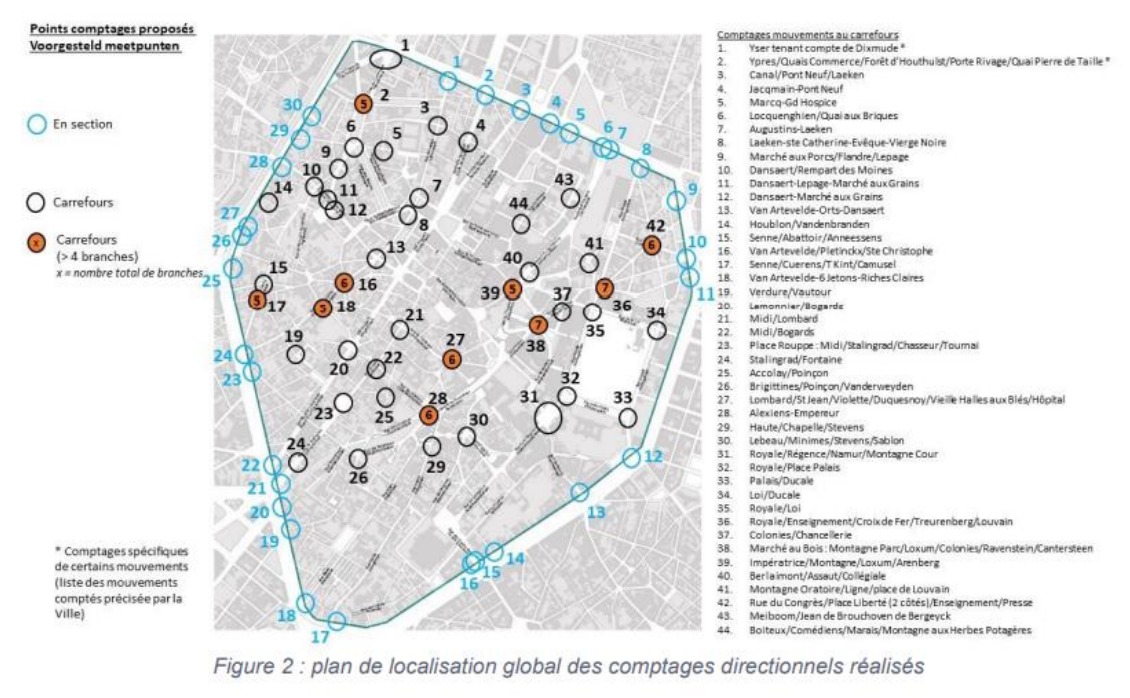Thessaloniki gets ready for its metro launch in November
The underground rapid transit lines have been under construction for almost two decades due to various project delays
 TheMayor.EU logo
TheMayor.EU logo The Good Move Plan has increased walking space, reduced noise and created a boost of around 18% in cyclists
Yesterday, authorities in the city of Brussels announced the first results of the Good Move Plan. The plan is mainly aimed at changing the flow of traffic with closed and one-way streets within the city’s so-called ‘Pentagon’ – the main central area.
According to the initial results after just six months, since the strategy was introduced, the total traffic has fallen by around 19%. This figure was determined by the number of cars passing at 45 intersections in the Pentagon. The first count was taken on 26 October 2021, while the second – was on 8 November 2022, a couple of weeks after the plan was put into action.
Nevertheless, in the first week after the Good Move plan was introduced, the streets of central Brussels erupted in protest from shop owners, concerned that it would cause less traffic and less business. According to a statement by the city, officials have taken many citizen concerns into account.
Alderman for Mobility and the main proponent of the plan Bart Dhondt explained that local authorities weigh these concerns against the spirit of the plan and could make changes if necessary.
 A map of the Pentagon with all 44 counting points, Source: City of Brussels
A map of the Pentagon with all 44 counting points, Source: City of Brussels
Although local authorities state that it is too early to draw broad and sweeping conclusions, many of the intended effects of the plan seem to be realised. The central part of Brussels has a reduced traffic flow, with more walking space, pedestrians, cyclists, reduced noise and cleaner aid.
Additionally, authorities report an increase in the number of cyclists – an increase of 23% in the morning rush hour and by 13% in the evening rush hour. Travel times across the Pentagon seem to have remained the same for vehicles on average, and have improved in some cases, although not across the board.
At the same time, driving the entire Kleine Ring, the boulevard around the Pentagon, took around one hour, with measurements taken on 23 January 2023. That is five minutes faster than measurements before the Covid-pandemic and about the same as in 2021.
This means that traffic in the areas is generally decreasing, due to the reduced appeal of the new area. This is known as the evaporation effect.
Alderman Dhondt was quoted in a press statement saying: “Many people have simply made a different mobility choice and switched to cycling or public transport, for example. The circulation plan thus contributes to the ultimate goal: a more pleasant city for everyone.”

The underground rapid transit lines have been under construction for almost two decades due to various project delays

Now you can get your wine in Talence by paying directly in Bitcoin

That’s because the state has to spend money on updating the railway infrastructure rather than subsidizing the cost of the popular pass

Rethinking renewable energy sources for the urban landscape

The examples, compiled by Beyond Fossil Fuels, can inform and inspire communities and entrepreneurs that still feel trepidation at the prospect of energy transition

Now you can get your wine in Talence by paying directly in Bitcoin

The 10th European Conference on Sustainable Cities and Towns (ESCT) sets the stage for stronger cooperation between the EU, national and local level to fast track Europe's transition to climate neutrality.

At least, that’s the promise made by the mayor of Paris, Anne Hidalgo

The underground rapid transit lines have been under construction for almost two decades due to various project delays

At least, that’s the promise made by the mayor of Paris, Anne Hidalgo

Hostal de Pinós is located in the geographical centre of the autonomous region

Despite its church-y name, the district has long been known as the hangout spot for the artsy crowds

Urban dwellers across the EU are having a say in making their surroundings friendlier to people and the environment.

Forests in the EU can help green the European construction industry and bolster a continent-wide push for architectural improvements.

Apply by 10 November and do your part for the transformation of European public spaces

An interview with the Mayor of a Polish city that seeks to reinvent itself

An interview with the newly elected ICLEI President and Mayor of Malmö

A conversation with the Mayor of Lisbon about the spirit and dimensions of innovation present in the Portuguese capital














